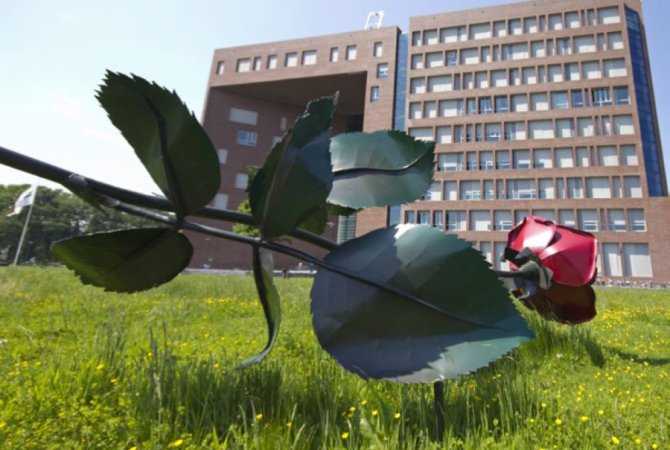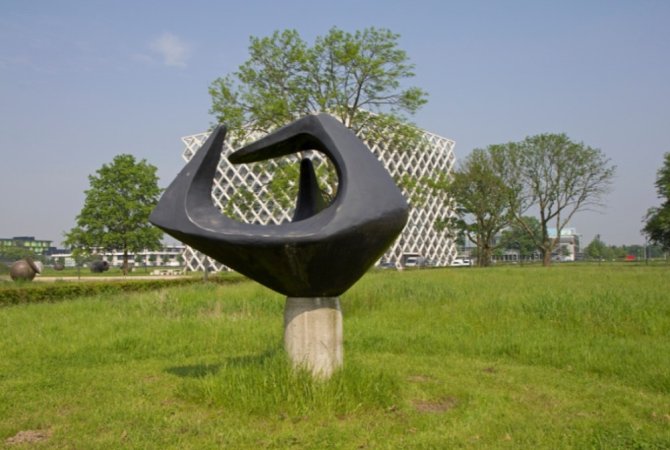
News
Opening of the academic year: ‘More scope for serendipity and masterful failures’
The fact that Wageningen University & Research wants to make an impact on society with science is beyond dispute, says President of the Executive Board Louise Fresco. But ground-breaking discoveries do not always emanate from well-defined research plans, so she would like to see more scope for serendipity and failure. Art is a source of inspiration for this, she says ahead of the opening of the academic year on 6 September with its theme of Crossing Boundaries.
You say we need to allow more scope for serendipity. What exactly do you mean?
“It’s about seeing things that are not immediately obvious and that you are not actually looking for. A discovery you make by chance, in other words. A well-known example is penicillin: when the Scottish physician Alexander Fleming used a Petri dish contaminated with a fungus in 1928, he realised that this method could be applied to fighting bacteria. It was pure chance, but of immense significance for medicine.”
Is this kind of serendipity less likely to happen nowadays because of the focus on achieving results?
“There is limited scope for this, as we have to be accountable when we use large sums of public money, and rightly so. Moreover, we are extremely focused on impact. We want to find answers to the global challenges facing society: preserving biodiversity, dealing with climate change. Don’t get me wrong — we are right to have that focus, but it does restrict the scope for serendipity and indeed for failure, too. Nowadays, failure mainly has a negative connotation, but it is part of life and part of scientific thinking. There is a reason why we use the expression ‘masterful failures’. We need to have the courage to allow research to fail so that we can discover the unexpected beauty in it.”
We need to have the courage to allow research to fail so that we can discover the unexpected beauty in it
Wageningen carries out a lot of applied research. Is there room in your agenda for free fundamental research?
“We do a lot of policy supporting research, and that’s important for society. But we must continue to guard against becoming a supermarket in which other people can shop, looking for that one jar of peanut butter. That means that fundamental research must remain a permanent fixture and that we must be able to determine our own agenda within it. And we will make sure that happens. The great thing is that free fundamental research gives rise to serendipitous ideas for applied research. By the way, serendipity is also a vital component of applied research; a new perspective can shake up the established order, particularly in complicated issues such as nitrogen.”

Do you think scientists can learn from art?
“Yes, chance discoveries such as penicillin only come to light when you see them. Having the courage to look at reality in a different way requires a certain attitude from the scientist: I call that ‘looking from the corner of your eye’. This comes naturally to artists: a painter can play with the way paint behaves when they apply it, and musicians are masters in improvisation which can engender the most wonderful things. Both good scientists and artists are creative spirits. It’s no coincidence that many scientists are also practising artists or musicians. Looking at an object from a different perspective in a studio generates inspiration — and that is not very different from the scientist taking an out-of-the-box look down a microscope in a laboratory or talking to people doing something completely different. That is a prime example of Crossing Boundaries, the theme of the opening of the academic year.
Scientists can learn from art: dancers and musicians are masters in improvisation
When you say crossing boundaries, do you mean working in a multidisciplinary manner?
“That too: it’s great that at WUR we are increasingly seeing different departments looking into one single research topic. Take ERRAZE (Early Recognition and Rapid Action in Zoonotic Emergencies, ed.), for example: a research project that will help us better prepare for transmissible diseases and future pandemics. Scientists from all kinds of backgrounds are working on that. But personally, I would like to see it extended even more widely. Why not bring in an art historian to think about controlling zoonoses or a philosopher to think about food safety? By looking at something together, you can point out the unsuspected to each other: that’s the cross-pollination that I have been pleading for for years.”
How do you create the right conditions for cross-pollination? Medical students are learning to look at reality in a different way through art in museums, which helps them to assess patients better and more objectively. Should WUR initiate something similar?
“It’s great that art is teaching doctors of the future to look at things differently. I certainly would not rule out the possibility of an initiative of this kind happening at Wageningen. In our teaching we encourage creativity through student challenges, for example. Many of our lecturers already teach their students to look at things from a new perspective, but we need to encourage that more widely. Also, we are surrounded by art on campus (see also Art Route Wageningen Campus): we can do much more to draw attention to this. This also applies to our artist in residence-programme, in which artists spend a short time on campus.”

And how do you ensure that researchers are given scope for serendipity and failure?
“I envisage us bringing together groups of promising scientists without a direct research assignment. Let them tackle a topic like biodiversity. The wildest ideas would then be allowed, along with the greatest failures. Obviously you won’t necessarily make a groundbreaking discovery every time, but this is always a valuable exercise; perhaps not necessarily at that particular point, but at a later stage. Take CRISPR-Cas technology, for example, which enables us to edit the DNA of viruses, bacteria, plants and animals. The basic discovery was made back in the 1980s: scientists discovered that bacteria could defend themselves by adding a piece of the virus to their genome. It has only recently become clear how much impact this chance discovery could have on our food supply and in the fight against hereditary diseases that have up to now been incurable.”
Why not bring in an art historian to think about controlling zoonoses?
Which areas do you think have the most potential for wild Wageningen ideas?
“Take photosynthesis, which we have been working on for many years, of course. That process — in which plants use sunlight to grow — is very promising in our quest to solve global food shortages. You see, plants only use a small proportion of the sunlight they are exposed to. If they were to absorb twice as much light, this could have a massive impact on food production. But that's not all: it could also teach us how to use similar chemical/physical processes to generate renewable energy. But so far we haven’t managed to work out precisely how to do that. Extremely free thinking coming from a highly diverse range of disciplines and cultures — we have at least 110 nationalities here on campus — could yield new insights."